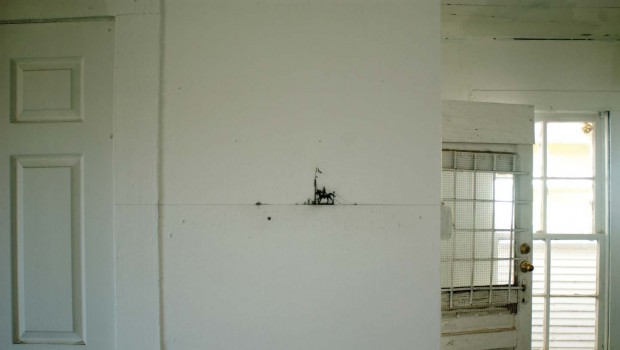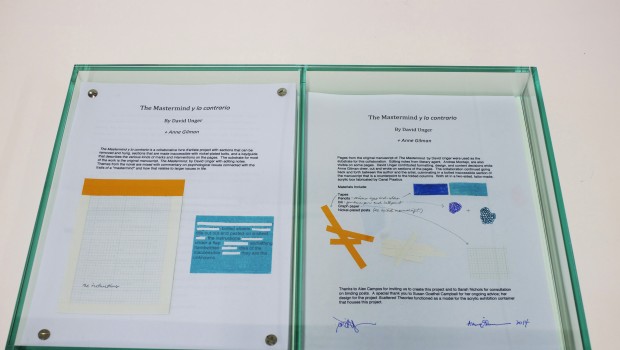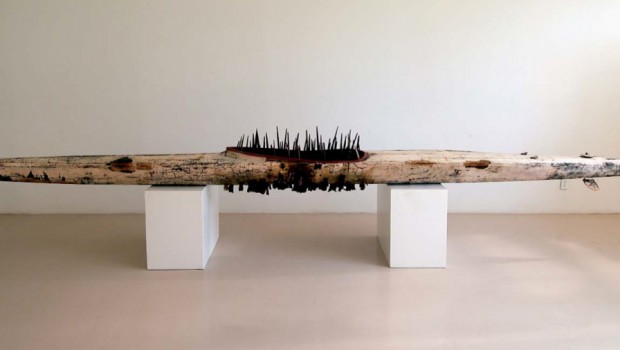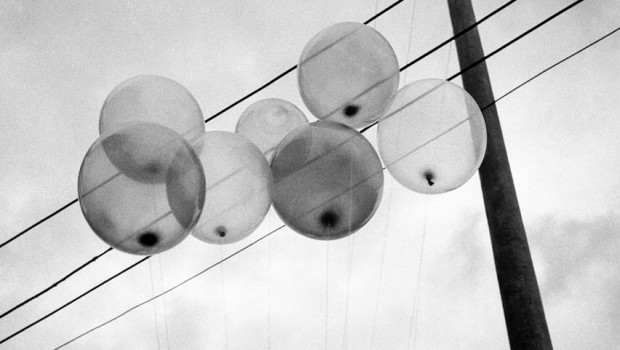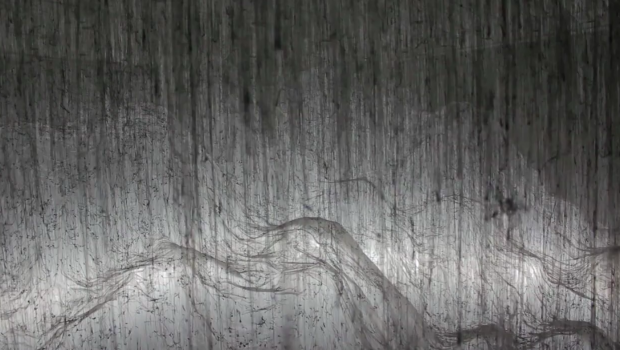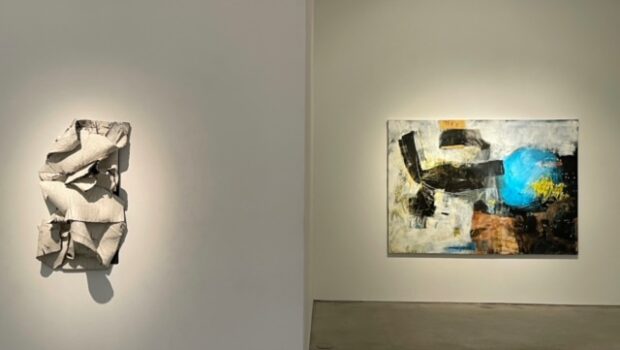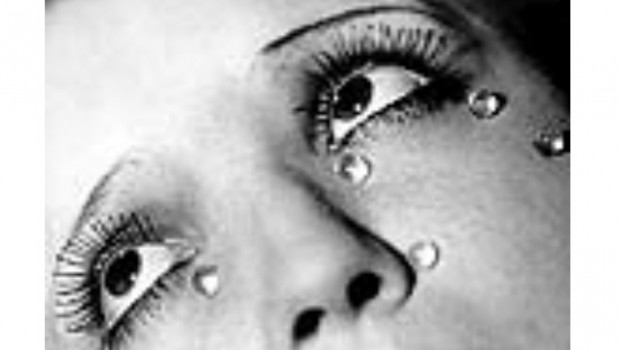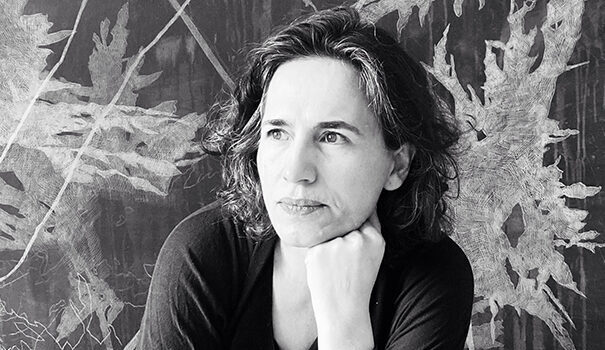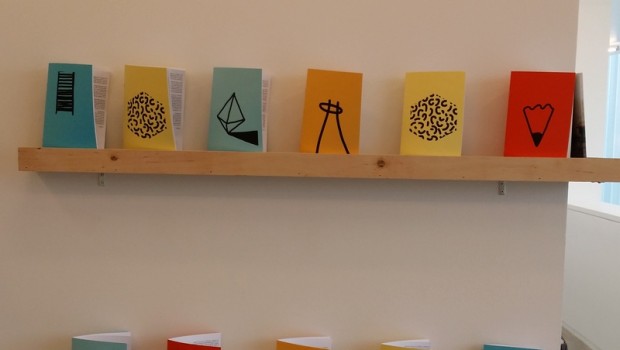Islands Floating on the Walls: Project Row Houses. Glexis Novoa
Elizabeth Cerejido
GLEXIS NOVOA: LANDSCAPE OF DISCOURSES*
Download Complete PDF / Descargar
The first impression of Glexis Novoa’s site specific installation at one of the nearly 100-year-old wood frame houses that make up Project Row Houses, is the pristine and serene nature of the space. Once your eye darts around the room, the meticulously rendered graphite drawings on the walls begin to come into faint focus. The seemingly minimalist approach taken by the artist, allows for the historic charge imbedded in the architecture of these homes to dialogue in harmony with the artist’s “intervention.” Project Row Houses’ active engagement, strong ties to the community and the integral role it plays in strengthening the vitality and relevance of Houston’s Third Ward, a predominantly African-American and multi-ethnic community provides the ideal context for the socio-political preoccupations that have always grounded and fueled the conceptual and formal aspects of Novoa’s work.
Glexis Novoa belongs to a generation of artists that grew up under Cuba’s revolution and received a rigorous art training provided by the socialist government. Part of the groundbreaking generation of the 1980s who ushered in the country’s contemporary art scene, Novoa, along with many of his peers, left the island in the early 1990s, coinciding with a drastic change in the art market. Their work was defi ned by a conceptualism that sought to engage and subvert the social, political and economic realities that shaped them, in sharp contrast to the artists that emerged in the ensuing decade of the 1990s, in which the collapse of the Soviet Union subsidies forced the Cuban government to legalize the American dollar and open the island to tourism, creating an art market that mixed socialism with capitalism. These artists were resolutely political – their work positioned at the intersection between art and its potential for social change. Novoa’s work, however, has always resided in the questioning and subverting of the political underpinnings that dictate cultural politics. As such, the political is a constant and intrinsic aspect of the conceptual makings of the work. Disorienting the viewer, with varying degrees of irony, has always been one of the artist’s principal objectives, done so in a subdued and subversive manner that makes it the more effective, if you care to look for it.

A.C.P.O.Z.T. (Afro-Cuban Party Orlando Zapata Tamayo), detail, 2010. Site-specifi c graphite wall drawing & ritual objects; At Project Row Houses, Houston
A work created during the historically-charged year of 1989, titled La etapa práctica [The Practical Stage], is replete with textual signs that at first glance look like socialist realist iconography, but are in fact apocryphal letters that point toward both the vacuous nature of the slogans and to the power of the sign as a “functioning symbol”. Though Novoa’s work has evolved over the years from canvas to minute drawings on plaster or marble, mostly executed in situ, the artist’s penchant for disorienting the viewer and de-contextualizing canonical signs to subvert their meaning is present throughout the various tableaux-like scenes that he created for this installation.
Novoa’s recent installation at Project Row Houses titled A.C.P.O.Z.T. (Afro-Cuban Party Orlando Zapata Tamayo) is part of a group exhibition curated by William Cordova – Round 32: eco, xiang, echo: meditations on the african, andean & asian diasporas. In this work, many of the operative forces, mentioned above, are succinctly employed, as is the mastery in the aesthetic and technical realm that adds another dimension to the strength of Novoa’s work. A thin line drawn throughout the entire space connects the drawings that appear like islands floating on the walls and anchors both the work and the viewer to the specifi city of a vantage point. That vantage point, explains Novoa, is the moment when he is submersed in the ocean and the cityscape with its skyscrapers and monuments appears as silhouetted forms that the artist calls “speeches or discourses.” Read in that manner, these silhouetted narratives define the poetics of power and history of various sites be it Miami, Long Island, or Havana. In similar fashion to his earlier work, Novoa disorients the viewer by displacing these structures from their intended lexicon and re-contextualizing them in unintended dialogues. One drawing depicts Jonathan Borofsky’s Hammering Man, which the artist describes as “an icon for the art of the 80s (at least for my generation)” alongside the Greek classical figure of Myron’s Discobolos. The latter lies on its side, while Borofsky’s Hammering Man now holds a flag, commanding a very different message than its original socio-political statement. These are “structures to improvise a sort of spontaneous decoration”, Glexis wittingly muses. The seemingly arbitrary nature of the coupling of these two icons, like the Stalin-like signage of the earlier work, are structures of power rendered meaningless in the re-created mise-en-scene of dystopian proportions.
In another drawing, the letters OZT appear on the top of a skyscraper amid hauntingly beautiful, familiar and strangely uniformed architectural structures. The abbreviation, in which a first reading of the piece simply appears to be the logo for a corporation, upon closer examination in fact stand for Orlando Zapata Tamayo, the Cuban political prisoner who recently died from a hunger strike, and whose passing has propelled intense criticism from many European nations as well as human rights groups in the United States, and galvanized the Cuban government’s antagonism toward dissident groups on the island. That this charged political issue of current relevance is imbedded in the drawing as one more sign among many other architectural and historical elements, underscores Novoaís quiet but poignant use of irony and wit in deconstructing how political events become inscribed as part of history. Is the artist suggesting that the death of a political prisoner of conscious has already passed onto the annals of history and as such his act is rendered meaningless?
This would be a tempting interpretation were it not for the last act, so to speak, in the installation. The conceptual framework of the installation comes full circle to the place and time in which the work is being created through the placement of a small altar Novoa displayed behind the only column in the open space. The altar is made up of 4 black and white photocopies of various portraits of Afro-Cubans, all of whom have played a significant role in the history of Cuba’s fight for independence and freedom. These individuals are also connected to the artist’s own lineage and as a result their presence offers what the artist explains as “a suggestion” in order to “identify my African and South American roots with this community and at the same time forge a connection with the socio-political reality of the Afro-Cuban population on the island and in general.” Furthermore, by introducing a foreign element (in this case the small altar made up of photographs combined with the ritual objects) into the overall context of the installation, Novoa questions how information circulates outside its context, in this case how information about the current political system on the island gets disseminated outside its geographic boundaries.
The A.C.P.O.Z.T (Afro-Cuban Party Orlando Zapata Tamayo) is a party or entity that doesn’t really exist and as such was created by Novoa as a gesture, a reference, an homage, but not as a political statement. In that sense the metaphor or symbolic act operates as an entryway through which varying social and political realities can intersect, dialogue and dispel stereotypes. In reducing the name of the political prisoner to an insignia in one of the drawings, yet paying tribute to him vis a vis a photographic image in a more personal context, Novoa both hides and uncovers the mechanisms of how discourses are formed and de-formed. The seemingly cryptic and visually captivating renderings of statues, monuments and apocalyptic urban landscapes are not mere depictions of a re-interpreted history, but salient and relevant narratives that invite and engage the viewer. Presented in a venue whose function is to create a space and a public forum for social awareness and community development, Novoaís site specific installation forces the viewer to physically experience the work up close in order to decipher the minutiae of the drawings while inviting the kind of dialogue with history and society’s current state that the residents of one of Houston’s oldest communities, daily engage with as lived experience.
* The term is borrowed from the artist statement about his work.
Posted: April 21, 2012 at 12:01 am


